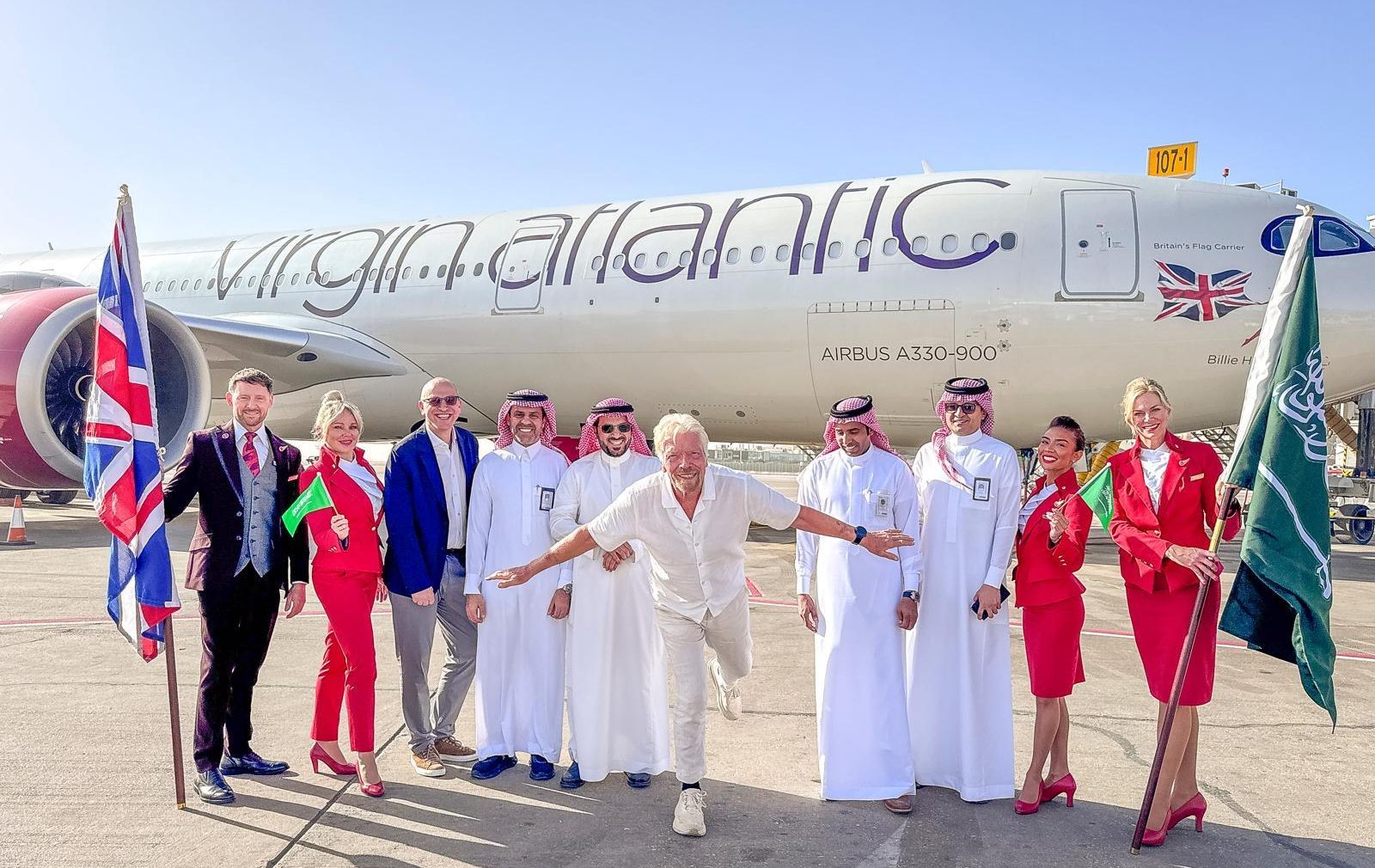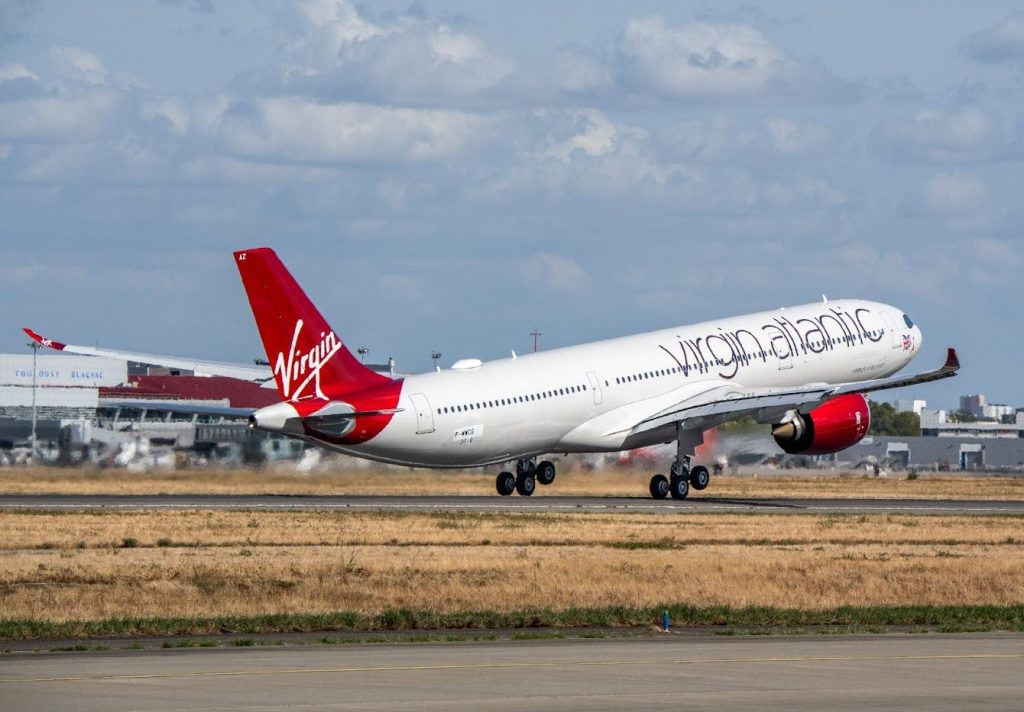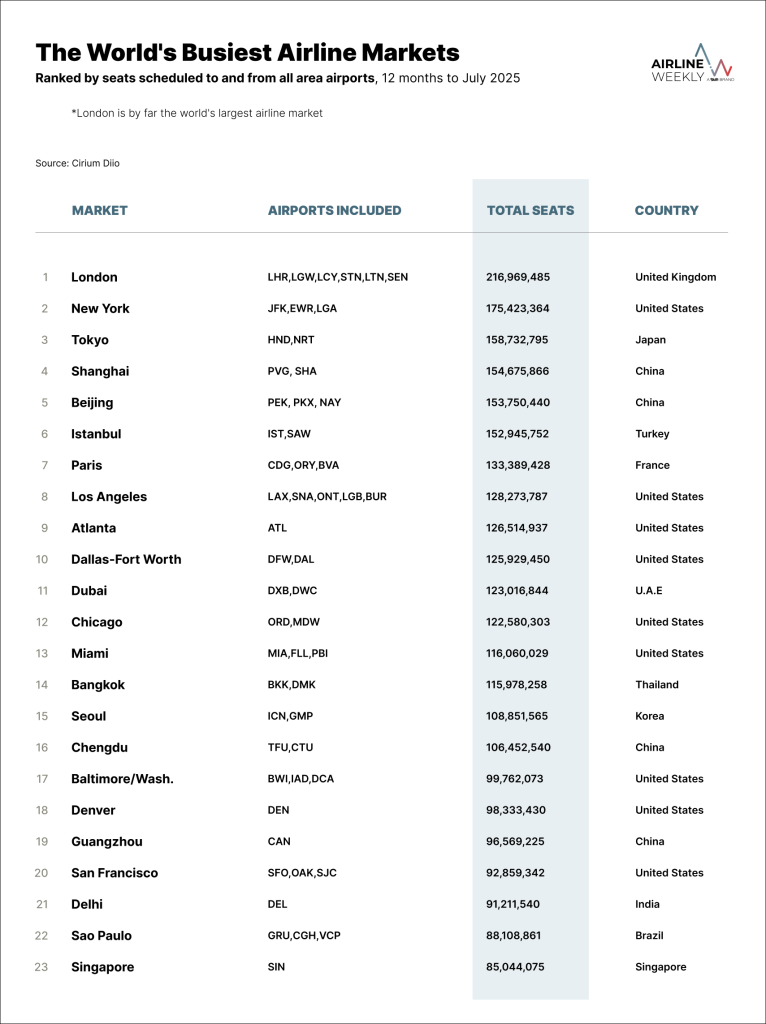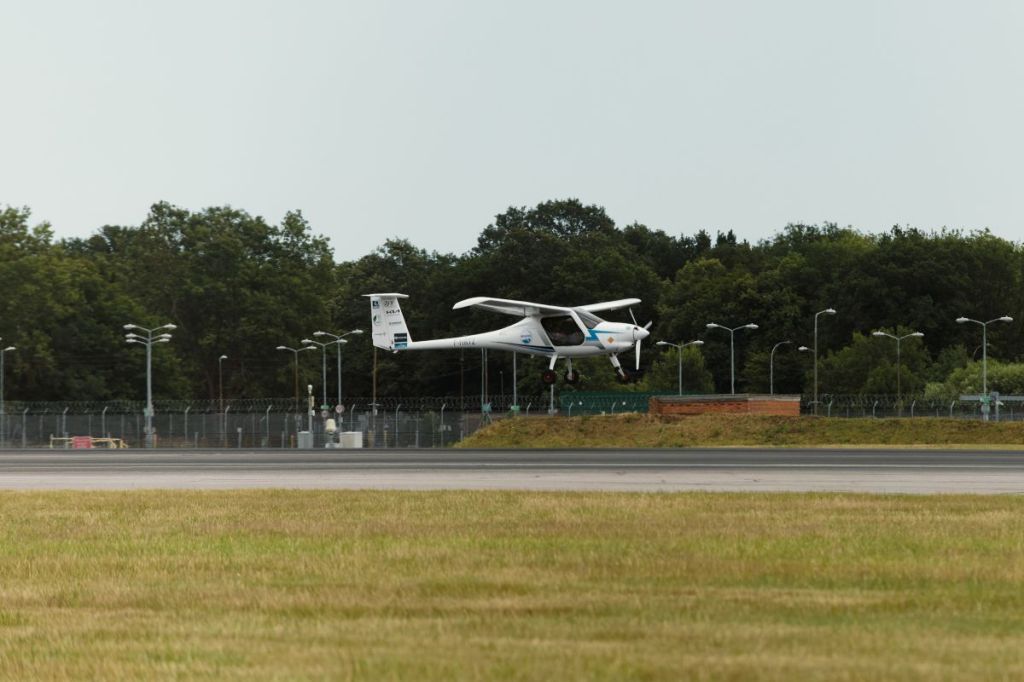Report Overview
Tariff uncertainty. A slowing job market. Negative Q1 GDP. Does a fragile American economy spell trouble for U.S. airlines? There’s seemingly no need to panic. All is well, at least for Delta. The carrier kicked off Q2 earnings season not just for the airline industry but all of Corporate America. Were the numbers any good? Yes, but with some caveats, as we explain in this week’s feature story.

Pushing Back: Inside the Issue
Here’s to another happy, healthy, and festive earnings season! Q2 reporting is underway, with Delta leading off for not just the airline industry but all of Corporate America. No wonder then, why its results were so closely watched on Wall Street. But were they good? Yes, but with some caveats. Read on to learn more.
Outside of the U.S., Korean Air and Norwegian Air were also Q2 early birds. Both, coincidentally, reported 10% operating margins for the period. One other thing they have in common: Both got a boost from strengthening home currencies. Don’t look now, but that’s going to be a major theme of Q2 earnings season for non-U.S. carriers: The weaker USD.
Jet2 reported results as well, but in its case for the 12-month period that ended in March, not June. The British carrier isn’t dazzling anyone with its profit margins. But it’s emerged as a solid money-making business, and importantly one that’s consistently growing. Jet2 also joined Norwegian in describing a healthy demand picture here in the summer super-peak. Ryanair’s Michael “Cheery” O’Leary said essentially the same in a recent interview with Reuters. It could simply be that people throughout Europe are opting to take holidays closer to home, rather than say, to the U.S. Incidentally, London Heathrow airport said last week that its passenger volumes to and from North America were down 3% y/y in June. That’s even as the number of North American flights from the airport increased 1%.
Back in the U.S., Allegiant struck a deal to sell its ill-fated hotel property in Florida, and the Senate confirmed longtime Republic CEO Bryan Bedford as the next FAA chief.
Don't forget, the Skift Aviation Forum is returning for 2025. Join us on December 3 at the Sheraton Fort Worth Downtown Hotel in Fort Worth, TX, for the premier event that brings together aviation’s top leaders and innovators.
Airline Weekly subscribers receive a complimentary ticket to join us in Texas. Just use the code SAF25AW at the checkout to claim your seat.

The Airline Weekly Lounge Podcast
Who Wants to Join an Airline Alliance?
In this week's show, Gordon and Jay look at the oneworld alliance and its latest member, Oman Air. Then they ask the big question: are airline alliances worth it?
Listen to the episode here, and find a full archive of the Lounge here.
Weekly Winners and Losers

Who's Flying High?
Delta

As you’ll shortly read below, Delta’s second quarter wasn’t perfect, but it was certainly good enough to allay some of Wall Street’s lurking fears about the health of the industry.
Korean Air

Though it doesn’t yet include Asiana in its financial reports, Korean Air is clearly flying high, with demand looking strong moving into the peak summer season.
Aerolineas Argentinas

Within airline circles, it’s long been a synonym for bloat and ineptitude. Not anymore. Is the Argentinian flag carrier turning into Copa? Alright, let’s not get too carried away…

Who's Feeling Low?
Italian Aviation

Airlines and passengers navigated a challenging series of strikes on July 10 at airports across Italy. The action also included local crews at LCC easyJet.
British Airways

Virgin Atlantic is seeking to leapfrog its old rival with Starlink Wi-Fi, a biz class overhaul, new-look lounges, and an arsenal of AI-powered tech.
Cancun

The resort is seeing airport arrivals decline this year, with ASUR reporting a 6% y/y decline in international traffic during the H1 2025. One reason is the rise of nearby Tulum as an alternative. Another is Mexico’s aircraft shortage.
— Jay Shabat and Gordon Smith
Weekly Skies
Crunching Korean Air
- Delta’s close SkyTeam ally Korean Air also beat the crowds and reported its Q2 financial results. It was another good showing, with operating margin holding steady with last year at 10%. Revenues did decline y/y, falling about 1%. Passenger revenues dropped 2%, on 1% less ASK capacity, and cargo revenues dropped 4%, offset some by gains in auxiliary businesses, the largest of which provides maintenance to military aircraft, including those flown by the U.S. Happily, total operating costs also declined by about 1%, thanks to a 21% plunge in fuel outlays. Non-fuel inflation was partly linked to wage increases.
- Premium passenger demand, the airline noted in a presentation slide, “remains solid on key routes, including the U.S., Europe, and Southeast Asia.” Keep in mind that many of its passengers are connecting from one market to another via its Seoul Incheon hub. Bookings for the summer peak season look strong, especially for leisure. However, Korean Air is reducing capacity to Dubai due to tensions in the Middle East. It also said U.S. connecting demand is weaker due to “stricter entry policies.” That seems to be affecting the Chinese market most, with fewer Chinese travellers able to obtain U.S. visas. On the other hand, more Koreans are visiting China, in response to visa relaxation. The Japan market, a strong one for the past few years, is starting to soften some. That could be currency related, though the airline didn’t say.
- Cargo accounted for 27% of Korean Air’s total Q2 revenue (passenger revenue was 61%). Unsurprisingly, the U.S. tariff war is a major concern, specifically the decline in e-commerce exports from China to the U.S. On the other hand, Korean Air is right in the thick of the supply chain for semiconductors, data center servers, and other equipment linked to the artificial intelligence boom.
- There’s one important caveat to the profit figures Korean Air just reported: They do NOT yet include figures from Asiana. The two airlines completed a merger, but financial accounts are still reported separately. Asiana hasn’t yet published any figures for the second quarter of 2025. But for Q1, its operating margin was just 3%. For all of 2024, it also managed just 3%. Its 2024 net result was deeply loss-making, weighed down by debt. Also don’t forget that in May, Korean Air paid $220m for a 10% stake in Canada’s WestJet, co-investing with Korean’s joint venture partner Delta.
Currency Tailwind Boosts Norwegian
- Unlike Korean Air, which reports results excluding Asiana, Norwegian’s results include its new subsidiary Wideroe. Together, they earned a 10% operating margin, a nice boost from 6% y/y. Margins were similar in fact, for both the Norwegian and Wideroe operations. The company is getting a big tailwind from the weaker U.S. dollar, which helps reduce costs. At the same time, it’s harvesting merger synergies. And it’s implementing its Project X profit improvement program.
- On the other hand, Norwegian isn’t growing as much as it would like due to ongoing Boeing Max delivery delays. That subdued expansion, frustratingly, is stunting further progress on cost cutting. In other words, it’s unable to realize the economies of scale it was hoping for. Nevertheless, the airline says: “Current booking trends and an improved supply-and-demand balance in the European market for air travel support an overall encouraging outlook.”
- In another sign of its turnaround following its government bailout and bankruptcy exit, Norwegian will once again start paying dividends to its shareholders.
Who’s Feeling Blue? Not Jet2
- Jet2 reported its results for the 12 months that ended in March. They showed a respectable if unspectacular 6% operating margin, on about $9.2b in revenue. The British leisure travel group has two core businesses: a tour operator (Jet2holidays) and the Jet2.com airline.
- For context, Ryanair produced about $15b in revenue in 2024. easyJet’s figure was roughly $12b. Jet2, however, is now larger than Wizz Air, whose annual revenues are about $7b (which in fairness have been depressed lately by aircraft groundings).
- In any case, Jet2 is becoming a major force in European leisure travel, competing effectively with better-known brands. British holidaymakers certainly know the Jet2 brand, which has particular resonance among older travelers, many of them retired with surplus time. Jet2 customers tend to skew affluent as well. One of the company’s goals going forward, however, is to broaden its appeal to include younger and lower-income travelers.
- It has the U.K. market well covered. With the opening of bases at London Luton and Bournemouth, it now has 13 in total. It surely will add more at some point, though for now, “We’re concentrating on building and maturing those bases.” Alas, it poured cold water on the prospect of flying from London Gatwick—“Gatwick isn’t on our radar at the moment. It’s a very busy, very full airport. And we don’t have any plans at the moment to start operations from there.”
- On the other hand, it seems interested in serving Egypt and Tunisia. It started flying to Morocco just last fall.
- As a reminder, Jet2 is Britain’s largest packaged tour operator. Unlike TUI and some other rivals, it doesn’t put its customers on other airlines—it uses only its own planes. Its average customer booking just a flight pays about £119. Its average passenger booking a packaged tour pays about £873. It’s now re-fleeting with CFM-powered A321neos. Its total fleet this summer will reach 135 planes, up from 126 last summer.
- Ten years ago, Jet2 sold 1m packaged holidays. Now it sells almost 7m. And it fully expects the growth will continue. Demand still looks good this summer, perhaps helped by more Brits taking holidays closer to home rather than, say, the U.S. People are booking closer to departure than in the past.
- Management, in the company’s first-ever earnings call, did flag some recent softness in seat-only yields. Packaged holiday pricing, by contrast, is “resilient and modestly up y/y.” One final fact about Jet2 (an important one): Its MyJet2 loyalty program now has 7m members. And a final quote from the airline: “Customers [are] still eager to get away from it all, provided pricing remains attractive.”
Allegiant Shifts the Sunseeker
- Blackstone will acquire Allegiant Air’s beleaguered Sunseeker Resort for $200 million. It represents a major loss for the airline just 18 months after opening the Florida property at a cost of $720 million. Allegiant had been looking to offload the Charlotte Harbor, Florida hotel following a string of quarterly losses. The site became a drag on Allegiant’s bottom line, as the carrier recorded property damage costs from bad weather and low operating revenues.
- The hotel opened in December 2023 and was part of Allegiant’s foray into the hotel industry after seeing success with third-party bookings. At the time Allegiant founder and former CEO Maury Gallagher described the development as “transformational.” However, more than a year later, the hotel was “no longer fully recoverable,” according to a securities filing Allegiant posted in January. By July 2024 it hired Prospect Hotel Advisors to “conduct a strategic review of the property.”
Leana’ and Meana’ in Argentina
- Aerolineas Argentinas claims the first quarter saw its “best financial result since the company’s re-nationalization in 2008.” Hmm. That’s after a $20m net profit for all of 2024, or $57m after some unspecified “accounting adjustments.” The airline says it will not need any government subsidies this year.
- What accounts for the turnaround? Critically, the company cut costs by reducing headcount 16%. It also closed most of its sales offices throughout Argentina. Demand has been pretty strong as well, especially from international tourists.
- Between 2008 and 2023, Argentina’s government transferred nearly $8b to its long-hapless airline. Now though, it assures everyone that it’s “focused on efficiency and productivity, building the necessary viability for eventual privatization.”
Changes Afoot...
- The U.S. TSA will no longer require passengers to take off their shoes during security screenings. The move was announced by Department of Homeland Security Secretary Kristi Noem last week. She said the agency is looking to streamline its processes ahead of major events like the football (soccer) World Cup and the Olympics.
- The change is also partly in response to technology improvements to the screening process, Noem said. She added that there may still be some cases where passengers may have to take off their shoes. “The one thing that I will say is that doesn't mean that there won't be times once in a while where someone will have to remove their shoes… if they get put into a different situation or need additional layers of screening where that may be asked of them.”
- The TSA has implemented a shoes-off policy since August 2006, nearly five years after a terrorist tried to detonate an explosive inside his shoe on a flight from Paris to Miami. Travelers with TSA PreCheck were already not required to take off their shoes during security. Noem said that PreCheck still had many advantages compared to traditional screening, since flyers don’t have to take off their belts and coats or have to remove their electronics from their luggage. “I believe pre-check will still be something that many travelers will want to utilize,” she added.
— Jay Shabat and Gordon Smith
Additional reporting by Meghna Maharishi
Fleet
Virgin’s Plane and Product Overhaul
- Virgin Atlantic is making a significant push into the premium leisure and business travel market with a wide-ranging plan to upgrade its fleet, enhance onboard products, and expand its digital and loyalty platforms. At a swanky event in London last week, the carrier outlined changes across nearly every customer touchpoint of its operation.
- The airline’s much-touted "$17 billion fleet renewal program", set for completion by 2028, will see Virgin operating a modernized fleet of 45 widebody aircraft: 19 A330-900s, 12 A350-1000s, and 14 B787-9s. Alongside fleet efficiency gains, the airline is also increasing the number of premium seats reflecting continued demand.
- Virgin’s next 10 A330-900 deliveries, due from Q3 2026, will feature an updated layout with six Retreat Suites, 48 Upper Class, and 56 Premium seats, up from 32 and 46, respectively. Economy capacity will drop to 128 seats, down from 184. These aircraft will be deployed on routes including Heathrow to New York JFK, Miami, and Boston.

- Separately, the airline plans to retrofit its 787-9s beginning in 2028, with design updates based on the A330neo. The new layout will reduce economy capacity from 192 to 127 seats while expanding Upper Class from 31 to 44 seats and Premium from 35 to 56. The aircraft will also be fitted with eight Retreat Suites. Virgin expects the retrofit to be completed by 2030.
- In other news, Virgin will become the first UK airline to offer Starlink Wi-Fi. The service will be free to passengers who sign up for its Flying Club program. Installation is scheduled to begin in late 2026 and complete by the end of 2027. The Flying Club itself will also see changes, including a new recognition model for long-time customers who may not travel frequently enough to meet traditional tier thresholds.
- Elsewhere, a new mobile app – expected to launch in December 2025 – will offer enhanced booking, loyalty, and real-time journey updates. Notably, the app will include a voice-based AI concierge, developed in partnership with OpenAI and Tomoro.ai. Virgin is also investing in its Clubhouse lounges, with refurbishments planned for flagship locations at Heathrow and JFK.
AirAsia Doubles Down with Airbus
- AirAsia has signed a deal for 50 Airbus A321XLRs, with options for 20 more. The planes – with a list price of more than $12b – will start arriving in 2028 and keep coming through 2032. According to Tony Fernandes, CEO of AirAsia parent Capital A, the goal is to create "the world’s first low-cost network carrier," something that works like full-service airlines such as Emirates or Qatar Airways, but at a fraction of the cost.
- "We pioneered low-cost travel in Asia – now, we are taking it to the next level," Fernandes said. "We gave people in Asean the opportunity to explore Asia – now we want the world to see Asean, and Asean to see the world. The A321XLR and A321LR are the game-changers enabling this vision."
- The aircraft’s longer range opens up markets for AirAsia, with Fernandes mentioning several regions where the airline sees opportunity. Saudi Arabia is among those that top the list. The kingdom is spending billions on tourism and Fernandes called it a "potential hub" along with the United Arab Emirates and Bahrain. The airline is also looking at expansion into Central Asian countries such as Kazakhstan and Uzbekistan.
- As regular readers will attest, AirAsia already has a massive order book. The airline group has commitments for more than 300 Airbus planes across its operations in Malaysia, Thailand, Indonesia, the Philippines, and Cambodia. This new order adds to 20 A321XLRs already ordered.
— Jay Shabat and Gordon Smith
Additional reporting by Peden Bhutia
The Stock Take
Airline Performance
July 7-11, 2025
What am I looking at? The performance of airline sector stocks within the ST200. The index includes companies publicly traded across global markets including network carriers, low-cost carriers, and other related companies.
The Skift Travel 200 (ST200) combines the financial performance of nearly 200 travel companies worth more than a trillion dollars into a single number.
By the Numbers

Note regarding the chart above: Deciding which airports to include within each city market isn't an exact science. Should Islip or White Plains be included for New York City? How about Sharjah for Dubai? Does Shenzhen belong in the same market as Guangzhou? The above grouping, in other words, is not an exact science.
Talking Tech
Our regular round-up of the latest airline technology news and trends
IAG’s AI Engine
- IAG’s AI Lab has revealed a new engine optimization system (EOS) for its over-650-strong fleet. The tool provides AI-driven inputs to engineers for the optimal maintenance schedules. This new generation of predictive maintenance goes beyond technical requirements, factoring in financial costs, operational requirements, and safety protocols.
- With supply chains stretched and the risk of cascading delays in the summer, the group is hoping to maintain its newfound on-time success with tools like EOS. Currently, EOS is only being used by engineers on Aer Lingus’ A320 fleet. However, the rollout will see Iberia use the tool next, and by all IAG carriers before the end of 2025. IAG hasn’t ruled out EOS being offered as a standalone product to other airlines in the future.
- Artificial intelligence tools are a boon for airline groups, with one team potentially able to develop software for thousands of aircraft and millions of passengers. IAG is not unique in creating a myriad of tools for subsidiaries, ranging from reducing food waste to training crew members.
Iberia’s Boarding Pass Boost

- In other IAG tech developments, Iberia is bringing a new convenience tool to passengers: live boarding passes. As it stands, travelers must manually re-add boarding passes to their Apple or Android Wallet after making changes, such as swapping seats, and airlines cannot typically update passes to reflect gate changes or delays. Travelers on Iberia can now have their boarding passes updated without manual intervention, with a push notification along with the standard email.
Departures & Arrivals
Notable vacancies, appointments, and retirements from across the industry
New FAA Chief Confirmed
- Republic Airways CEO Bryan Bedford is the new administrator of the FAA. The appointment followed a Senate vote marked by rare partisan division, as concerns over pilot training standards and aviation safety dominated discussion. Bedford was confirmed mostly along party lines by a vote of 53-43.
- The confirmation vote for FAA administrator was unusually partisan as key Democrats vowed to not support Bedford after he refused to commit to upholding the 1,500-hour rule when asked during a Senate Commerce Committee hearing in June. New Hampshire Senator Jeanne Shaheen was the only Democrat to vote in favor of Bedford.
- Congress instituted the 1,500-hour training requirement rule for pilots to operate a commercial aircraft following the fatal 2009 Colgan Air crash in upstate New York. Before that, pilots typically had to log at least 250 hours in order to operate a commercial aircraft.
- Despite some critics, Bedford received vocal support from the airline industry. Several trade groups and unions, including Airlines for America, the National Air Traffic Controllers Association, and U.S. Travel congratulated Bedford on his confirmation.
Looking to make a senior leadership hire? Skift Exec Search can help.
We are uniquely positioned to source VP to C-suite level talent in the travel industry globally.
Get in touch to speak to one of our experts today.

Picture Perfect
Our favorite image from recent global airline developments

Here’s something a little different from the usual roll call of Airbus and Boeing jets. Pictured at Gatwick is the first-ever electric flight to land at the London airport. The Pipistrel Velis Electro aircraft touched down on July 9 as part of a 50-flight tour organized by VINCI – the operators of Gatwick. The plane is described as an early-stage proof of concept model which aims to set the foundation for scalable products that could help decarbonize passenger air travel.
Feature Story
Has Delta Dodged the Storm?
Tariff uncertainty. A slowing job market. Declining retail sales. Negative Q1 GDP. Uh oh, does the increasingly fragile U.S. economy spell trouble for U.S. airlines?
Take a deep breath. No need to panic. All is well… for Delta at least.
That was the airline’s reassuring message last week, as it kicked off Q2 earnings season by announcing a solid 13% operating margin. Demand, it said, has stabilized after “resetting to a lower growth rate earlier this year.” Weakness is still largely confined to economy class travel during offpeak periods (see below). Consumer confidence and travel spending, meanwhile, remain elevated among U.S. households earning annual incomes exceeding $100k—that’s Delta’s target demographic. Sure enough, revenue from premium seats and services increased another 5% y/y during the April-to-June quarter. And looking ahead, “There’s nothing in any of the forward bookings that would have us indicate that there’s a diminishing demand for premium cabins or services.”
No less importantly, revenue from Delta’s SkyMiles loyalty program—its crown jewel—increased another 8% y/y. The program is attracting more and more millennial and Gen Z members, many of whom are also holding American Express SkyMiles credit cards. Spending on Delta-branded cards continues to rise at a double-digit annual pace, which explains why Amex gladly pays Delta $8b a year. This Amex money, Delta explains, provides “durability to both earnings and cash flow.”
Still not convinced that Delta is flying above the economic turbulence? Last quarter, its cargo revenue increased 7% y/y. Revenue from its maintenance business jumped 29%. Revenue from selling non-airline travel products like hotel rooms, rental cars, and cruise vacations increased 8%. With a boost from bankers, consultants, and IT professionals, revenue from corporate contracts grew just “modestly.” But that’s hardly symptomatic of an economic downturn. In the meantime, “margins are solid in all hubs and geographies,” with particular strength in “core hubs where we have industry-leading scale and connectivity.” Sounds like it’s talking about Atlanta.
At the same time, international profit margins have “structurally improved,” owing to new widebody planes with better economics, a larger and better selection of premium seats, new routes, and a post-pandemic surge in Americans travelling overseas, supported by a strong U.S. dollar and a growing consumer preference for experiences over goods.
"A new partnership with India’s fast-growing IndiGo doesn’t involve equity, but it’s strategically significant..."
Don’t forget about Delta’s many international partnerships with other airlines, some involving ownership stakes. In fact, the accounting value of its equity investments increased by some $700m last quarter. It owns large chunks of Virgin Atlantic, Aeromexico, Korean Air, and Latam--the latter two are publicly traded and increased substantially in value last quarter. Delta owns smaller stakes in Air France/KLM and China Eastern. Just this spring, it bought a 15% stake in Canada’s WestJet. A new partnership with India’s fast-growing IndiGo doesn’t involve equity, but it’s strategically significant, nonetheless. Another new partner is Scandinavia’s SAS, now in the arms of Skyteam’s Air France/KLM.
It seems beyond any reasonable doubt: Delta’s business remains strong and resilient, regardless of what its management team calls “a dynamic and somewhat unpredictable environment.” Of course, airlines are always and everywhere susceptible to all kinds of shocks: wars, pandemics, natural disasters, labor strikes, fuel spikes, maybe even tariff hikes... But if there’s some run-of-the-mill economic turbulence? Delta appears fit to fly right through it.
So, there you have it. All is happy in Delta Land. Thanks for reading. Have a good day.
Wait, hang on. That’s not quite the end of the story.
If the question is whether Delta would continue earning solid profits even if the economy wobbles, the answer, indeed, is yes. It probably would. But there are two other important questions—two questions with less reassuring answers. First, does Delta’s headline profit margins mask some underlying concerns? And second, for those concerned about the rest of the U.S. airline sector, are Delta’s steady and stable business prospects representative of what rival carriers are experiencing?
"Does Delta’s headline profit margins mask some underlying concerns?"
As mentioned, Delta’s Q2 operating margin, excluding special items, was 13%. No shame in that. But in the same quarter last year, its operating margin was 15%. And the year before that, it was 17%. The trend isn’t moving in the right direction. But wait a minute, Delta paid just $2.26 per gallon for fuel last quarter, a 14% drop from the year prior. That average, by the way, was down about 40% from three years ago, when the company still managed a 12% operating margin. Shouldn’t Delta be earning significantly higher margins with fuel so relatively cheap?
The problem is that a lot of other stuff continues to get more expensive. Last quarter, on a y/y basis, Delta encountered double-digit cost increases for labor, airport charges, and contracted services, including regional flying. Non-fuel unit costs, ex special items, rose about 3%. At the same time, Q2 passenger revenues were roughly flat, even as Delta grew ASM capacity by 4%. Yields dropped. Load factors dropped. Naturally, passenger unit revenues dropped—by 4%. Unit revenues dropped on transatlantic routes. They dropped on transpacific routes. They held steady on Latin American routes but with total passenger revenues down.
It’s hardly abnormal to see average airfares decline as fuel prices decline. There’s no harm in that, per se. But as mentioned, Q2 margins were down y/y, and it looks like they’ll be down again this quarter. Last week, as it announced its earnings, Delta gave Wall Street a burst of confidence by restoring its full-year earnings per share, cash flow, and debt guidance. Recall that it suspended annual guidance after the tariff scare this spring. The restoration sure enough lifted the airline’s stock last week. But it also gave quarterly guidance, which included expectations for a Q3 operating margin (ex items) of between 9% and 11%. Good? Sure, but once again below what it earned in the same quarter last year—its Q3, 2024 figure was 12%, excluding the impact from an IT outage (remember the Crowdstrike snafu?).
"The restoration sure enough lifted the airline’s stock last week..."
For all its strengths, Delta really does have a demand problem. It’s concentrated in the non-premium segment, both domestic and international. It’s mostly affecting offpeak travel periods. The good news is that it’s stabilized. The bad news is that Delta didn’t mention any evidence of it improving. Non-premium revenues last quarter, by the way, fell 5% y/y. As for transatlantic markets specifically, the softness is coming mostly from European points of sale. Americans, Delta says, are still eagerly visiting Europe, even more so in the fall these days, when temperatures are lower and crowds are thinner. Separately, speaking of weather, another quarter of above-average storm activity suggests again that airlines today are operating in a more unstable weather environment, implying structurally higher costs.
What does the current epidemic of weak economy-class demand mean for U.S. airlines that don’t have much offsetting premium demand? What happens, in other words, to the industry’s low-cost carriers? The implications won’t make anyone but their rivals smile.
Then again, the industry is aggressively trying to inoculate the epidemic with capacity cuts. “By the time we hit September, domestic industry seats are actually down close to 1%,” said Delta’s Glen Hauenstein. “So, that’s a significant reduction in capacity, and it’s a significant reduction in off-peak capacity that’s even greater than that… I’ve been in this business quite a long time. And I’ve really never seen that amount of capacity come out in a non-recessionary environment. And I don't think anybody is predicting that we're in a recession. So. I think this is a really good indication that the industry is doing what it needs to do to restore profitability.” Delta, make no mistake, will be cutting its own capacity following the end of the summer peak next month.
Reassuring? Maybe Delta should consider a new line of business providing Wall Street therapy.
On Our Radar
At the end of every issue of Airline Weekly, we wrap up the edition with the key dates that should be in your diary for the coming days.
Expect major financial updates as well as slightly more left-field events which have noteworthy potential.
Have an event that you think should be On Our Radar? Email gs@skift.com

Key events to watch in the coming days:
Thu.
July 17
United Q2 Earnings
With Delta setting the scene last week, it's United's turn on Thursday. Will the carrier echo the performance and sentiment of its Atlanta-based rival, or could United offer a different perspective on the state of the industry?


